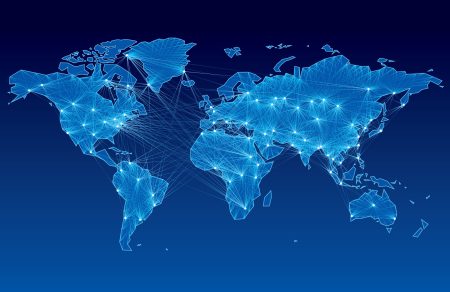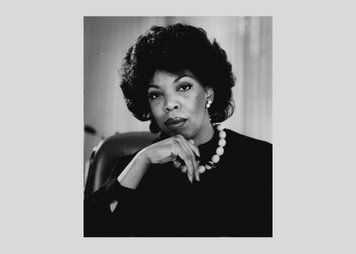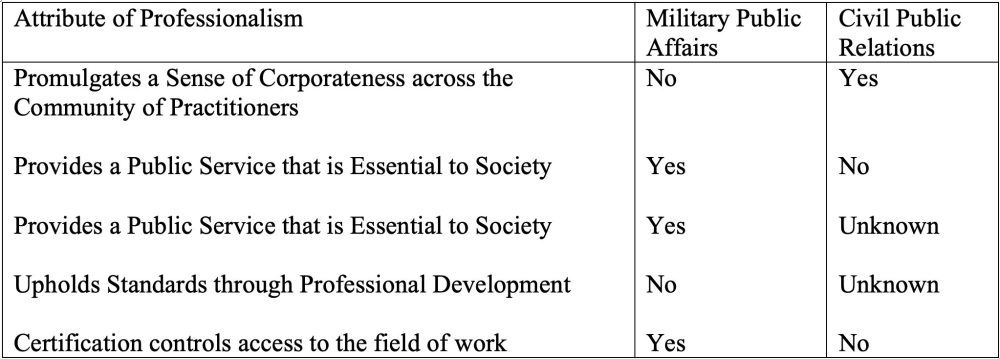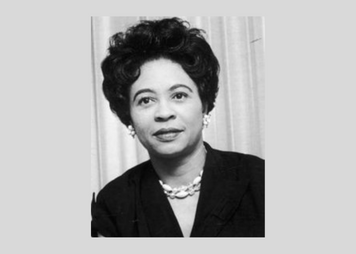 This blog is based on the original study in the Public Relations Journal.In early March 2022, within 10 days of each other armed domestic terrorists killed 10 people at a supermarket in Buffalo, NY and 19 children and 2 adults at an elementary school in Uvalde, TX. Organizations worldwide scrambled to halt scheduled social media content and decide how or if to offer digital “thoughts and prayers” to those affected by the shootings.But mass shootings are not the only public tragedy organizations have to think about when it comes to their social media content. Man-made disasters (shooting, bombings, riots, etc.), natural disasters (Covid, tornados, floods, etc.), and celebrity deaths (Queen Elizabeth II, Kobe Bryant, Olivia Newton-John, etc.) are a large part of the content that circulates social media platforms and commands the attention and emotions of consumer publics.Strategic Silence or Help in SensemakingJay Baer of Convince & Convert suggests that rule #1 for organization social media comments during public tragedies is to “stay silent during a tragedy,” while Beki Winchel of PR Daily suggests organization responses often appear “tasteless.” Organizations do not want to be perceived as taking advantage of the tragedy for their own gain, an effect that could result in a crisis for the offending organization.However, academic researchers Ulmer and Sellnow (2002) and Hayes, Waddell, and Smudde (2017) provide evidence suggesting organizations have a “moral obligation” to help audiences move forward from these events, should aid audiences during recovery, and assist in making sense of the deaths. Hayes and colleagues suggest this contributes to “collective healing”Social Media MourningThe Social Media Mourning Model (SM3) proposed by Moore, Magee, Gamreklidze, and Kowalewski (2019) served as the basis of this study. It identified three primary ways that individuals use social media for their mourning behaviors. First, one-way communication of the death narrative, showing those in their networks its permissible to talk to them about the death, and using social media features to evade or acknowledge the grief experience on their own terms. Second, two-way communication where information is shared with a larger mourning community, relationships are formed, and grieving becomes a collective experience. Third, immortality communication where the deceased remain continued social actors, mourners can habitually communicate with the deceased (e.g., birthdays, holidays, etc.), and the deceased can be remembered at any time.What Our Organizational Social Media Mourning Research SaysWhile the SM3 proposed individual-level social media mourning behaviors, we wanted to know how that translated to individuals’ expectations of organizations mourning with them, specifically during public tragedy events where large groups of people mourn together on social media sites. To examine this, our research team used a combination of in-depth interviews (n=16) and focus groups (four focus groups with n=52 total participants) with individuals who had used social media to mourn during a man-made or natural disaster. Questions were asked regarding the types of organizational social media mourning posts participants had observed, what they thought of the organizations sponsoring these posts, their perceptions of the intent of the posts, and positive and negative behaviors audiences may take toward different types of posts. Overall, our findings indicated mourning audiences want organizations to use social media in much of the same ways they are during public tragedy events.Key Organizational Social Media Mourning TakeawaysParticipants in this research provided the following suggestions for organizations that wished to take part in social media mourning during public tragedies:1.) Show genuine concern and emotions for the affected audiences in your social media mourning posts.2.) Identify and connect to the tragedy using the same hashtags as the mourning audiences (e.g., RIP).3.) Utilize or create images that are compassionate, empathetic, and tasteful.4.) Connect your organization to tragedy recovery with donations, sponsorships, or volunteer efforts.5.) Commemorate and help make sense of the tragedy in the months and years following.Finally, stay away from any messages that show images of death, promote the organization or its products, or make tragedy recovery efforts part of a strategic plan to improve your organization’s reputation. And if your organization can in any way be construed by mourning audiences as part of the reason behind the public tragedy – do not take part in social media mourning efforts (e.g., NRA offering “thoughts and prayers” following a mass shooting event). In the same vein, do not connect your organizational social media mourning posts to social issues (e.g., use your organization’s “thoughts and prayers” post to discuss gun control).ConclusionOrganizations that fail to connect with audiences using social media to mourn during public tragedies can experience negative effects such as damage to reputation, online protests, or boycotts. Our research shows several ways these effects can be avoided. Overall, organizations that find ways to honor victims and unify social media mourners toward recovery efforts will be successful and well-received by mourning audiences. Ultimately, we strongly suggest organizations establish, in advance of public tragedies, policies regarding how and when they will take part in organizational social media mourning, so they do not violate acceptable norms or instigate an organizational crisis.
...
This blog is based on the original study in the Public Relations Journal.In early March 2022, within 10 days of each other armed domestic terrorists killed 10 people at a supermarket in Buffalo, NY and 19 children and 2 adults at an elementary school in Uvalde, TX. Organizations worldwide scrambled to halt scheduled social media content and decide how or if to offer digital “thoughts and prayers” to those affected by the shootings.But mass shootings are not the only public tragedy organizations have to think about when it comes to their social media content. Man-made disasters (shooting, bombings, riots, etc.), natural disasters (Covid, tornados, floods, etc.), and celebrity deaths (Queen Elizabeth II, Kobe Bryant, Olivia Newton-John, etc.) are a large part of the content that circulates social media platforms and commands the attention and emotions of consumer publics.Strategic Silence or Help in SensemakingJay Baer of Convince & Convert suggests that rule #1 for organization social media comments during public tragedies is to “stay silent during a tragedy,” while Beki Winchel of PR Daily suggests organization responses often appear “tasteless.” Organizations do not want to be perceived as taking advantage of the tragedy for their own gain, an effect that could result in a crisis for the offending organization.However, academic researchers Ulmer and Sellnow (2002) and Hayes, Waddell, and Smudde (2017) provide evidence suggesting organizations have a “moral obligation” to help audiences move forward from these events, should aid audiences during recovery, and assist in making sense of the deaths. Hayes and colleagues suggest this contributes to “collective healing”Social Media MourningThe Social Media Mourning Model (SM3) proposed by Moore, Magee, Gamreklidze, and Kowalewski (2019) served as the basis of this study. It identified three primary ways that individuals use social media for their mourning behaviors. First, one-way communication of the death narrative, showing those in their networks its permissible to talk to them about the death, and using social media features to evade or acknowledge the grief experience on their own terms. Second, two-way communication where information is shared with a larger mourning community, relationships are formed, and grieving becomes a collective experience. Third, immortality communication where the deceased remain continued social actors, mourners can habitually communicate with the deceased (e.g., birthdays, holidays, etc.), and the deceased can be remembered at any time.What Our Organizational Social Media Mourning Research SaysWhile the SM3 proposed individual-level social media mourning behaviors, we wanted to know how that translated to individuals’ expectations of organizations mourning with them, specifically during public tragedy events where large groups of people mourn together on social media sites. To examine this, our research team used a combination of in-depth interviews (n=16) and focus groups (four focus groups with n=52 total participants) with individuals who had used social media to mourn during a man-made or natural disaster. Questions were asked regarding the types of organizational social media mourning posts participants had observed, what they thought of the organizations sponsoring these posts, their perceptions of the intent of the posts, and positive and negative behaviors audiences may take toward different types of posts. Overall, our findings indicated mourning audiences want organizations to use social media in much of the same ways they are during public tragedy events.Key Organizational Social Media Mourning TakeawaysParticipants in this research provided the following suggestions for organizations that wished to take part in social media mourning during public tragedies:1.) Show genuine concern and emotions for the affected audiences in your social media mourning posts.2.) Identify and connect to the tragedy using the same hashtags as the mourning audiences (e.g., RIP).3.) Utilize or create images that are compassionate, empathetic, and tasteful.4.) Connect your organization to tragedy recovery with donations, sponsorships, or volunteer efforts.5.) Commemorate and help make sense of the tragedy in the months and years following.Finally, stay away from any messages that show images of death, promote the organization or its products, or make tragedy recovery efforts part of a strategic plan to improve your organization’s reputation. And if your organization can in any way be construed by mourning audiences as part of the reason behind the public tragedy – do not take part in social media mourning efforts (e.g., NRA offering “thoughts and prayers” following a mass shooting event). In the same vein, do not connect your organizational social media mourning posts to social issues (e.g., use your organization’s “thoughts and prayers” post to discuss gun control).ConclusionOrganizations that fail to connect with audiences using social media to mourn during public tragedies can experience negative effects such as damage to reputation, online protests, or boycotts. Our research shows several ways these effects can be avoided. Overall, organizations that find ways to honor victims and unify social media mourners toward recovery efforts will be successful and well-received by mourning audiences. Ultimately, we strongly suggest organizations establish, in advance of public tragedies, policies regarding how and when they will take part in organizational social media mourning, so they do not violate acceptable norms or instigate an organizational crisis.
...
Read More...

 EUPRERA outlined current practices and future developments in managing communication in companies, agencies, non-profits, and other organizations.A survey of 1,672 communication professionals in 43 countries throughout 2022.Key Findings:1.) Diversity, equality, and inclusion are influencing organizational policies and communications worldwide, but only 51% of communicators in Europe have closely followed global trends and discussions in this area.2.) Most practitioners have experienced empathic traits from communication leaders; this has a significant positive impact on commitment, engagement, and mental health.3.) Very few communication departments have established an advanced use of CommTech to digitalize internal workflows and communication activities.— Current organizational structures are identified as the main obstacle to rapid transformation.4.) Quality of consulting in communications is difficult to achieve.— 3-in-4 respondents would like to see appropriate standards that cover either consultants, clients themselves, or both groups.Find the original report here.
...
EUPRERA outlined current practices and future developments in managing communication in companies, agencies, non-profits, and other organizations.A survey of 1,672 communication professionals in 43 countries throughout 2022.Key Findings:1.) Diversity, equality, and inclusion are influencing organizational policies and communications worldwide, but only 51% of communicators in Europe have closely followed global trends and discussions in this area.2.) Most practitioners have experienced empathic traits from communication leaders; this has a significant positive impact on commitment, engagement, and mental health.3.) Very few communication departments have established an advanced use of CommTech to digitalize internal workflows and communication activities.— Current organizational structures are identified as the main obstacle to rapid transformation.4.) Quality of consulting in communications is difficult to achieve.— 3-in-4 respondents would like to see appropriate standards that cover either consultants, clients themselves, or both groups.Find the original report here.
... 




 This topic matters because those of us who work in communication on behalf of others can play a role in building or breaking societal trust. Societies without trust become societies that fail. This is not a topic of mere semantics, but of how practitioners set the culture, perception, and relevance of the work to which they commit a great percentage of lifetime and energy to accomplishing. Communicators hold the tools to fracture, or to build bridges between individual stakeholders, groups, and societies. Those who endeavor to serve society well through the application of their vocational talents are more likely to understand and appreciate the weight and responsibility of their role in representative society than those who do not. Let us be practitioners who take the field to the next level by seeking not only to work well, but to serve well.
This topic matters because those of us who work in communication on behalf of others can play a role in building or breaking societal trust. Societies without trust become societies that fail. This is not a topic of mere semantics, but of how practitioners set the culture, perception, and relevance of the work to which they commit a great percentage of lifetime and energy to accomplishing. Communicators hold the tools to fracture, or to build bridges between individual stakeholders, groups, and societies. Those who endeavor to serve society well through the application of their vocational talents are more likely to understand and appreciate the weight and responsibility of their role in representative society than those who do not. Let us be practitioners who take the field to the next level by seeking not only to work well, but to serve well.
 Chase Spears has served as a military public affairs officer for 20 years and is concluding his time in uniform as a public affairs training advisor. He is a Ph.D. candidate in at Kansas State University and teaches crisis communication as an adjunct professor for Spurgeon College in Kansas City, Missouri. You can connect with him at chase@chasespears.com, and on LinkedIn.The views expressed in this paper are those of the author and are not representative of the official views or policies of the U.S. Army, U.S. Defense Department, nor any other agency or entity public or private.
...
Chase Spears has served as a military public affairs officer for 20 years and is concluding his time in uniform as a public affairs training advisor. He is a Ph.D. candidate in at Kansas State University and teaches crisis communication as an adjunct professor for Spurgeon College in Kansas City, Missouri. You can connect with him at chase@chasespears.com, and on LinkedIn.The views expressed in this paper are those of the author and are not representative of the official views or policies of the U.S. Army, U.S. Defense Department, nor any other agency or entity public or private.
... 


 Yeunjae Lee, Ph.D., Purdue University is an assistant professor in the Department of Strategic Communication at the University of Miami. Her main research interests include employee communication, internal issue/crisis management, and organizational diversity and justice.
...
Yeunjae Lee, Ph.D., Purdue University is an assistant professor in the Department of Strategic Communication at the University of Miami. Her main research interests include employee communication, internal issue/crisis management, and organizational diversity and justice.
... 